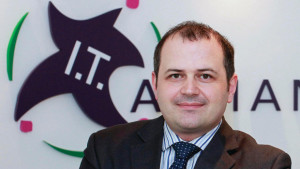We live in a world of rising risk — or it certainly seems so — across business actions and performance and especially in ICT where external malware and criminal threats are added to internal problems such as loss of control in any area. There is another kind of malware, in the sense of software and hardware systems that are either not fit for purpose or actually faulty. ICT governance aims to counter that risk by ensuring the quality and fit of all systems. By and large that brings the focus on IT projects and change management.
All of this has received a new impetus this century, driven by an unholy combination of financial mismanagement and downright scandals, recession and the inexorable rise of those cyberthreats. Clearly, an additional factor has been the barely controlled explosion of personal devices — and that cloud thing.

With Agile it is all too easy to add on costs, precisely because you can be flexible and adaptable. It is a good idea to have a discretionary element in the budget, say 10%, for changes where the value is clearly seen. It is important to have clear governance structures around the Agile approach, ensuring that each step contributes to value in the project outcome, Mark O’Loughlin, IT Alliance
We all recognise that Parkinson’s Law or some variation of it applies to all IT projects whether small or global, private or public, managed in-house or by expert consultants: any given project will tend to expand to fill the time and resources available.There are cynical old IT warhorses who will assert that in fact all projects tend to go even further, expanding to test any elasticity of time and budgetary resources to the snapping point. They will typically instance some of our best known multi-million euro project failures on this island although the inner island and the USA have often outclassed us in terms of years taken to waste even more millions before projects were euthanised.
At this stage, with several business generations of experience, we understand broadly the common causes and mechanisms of runaway projects or simple scope creep, time and budget overruns and failure to deliver project objectives. There are more than adequate libraries of case examples, root cause analysis and other hindsight metrics. But really the object of all such exercises today is to keep projects on track, literally from the first concept stage, using the wide range of project management methodologies and tools that are available.
Adaptability and flexibility
“We have been using the traditional structured and waterfall methodologies for some time. What is driving the Agile approach, as the name implies, is its adaptability and flexibility,” says Mark O’Loughlin, service management principal in the IT Alliance Group. “It gives you more control in small stages so that you can correct things as you learn and understand more about the project. You are also bringing in the business and the key stakeholders earlier in the conversation to advise and protect what you are doing. It works with smaller changes and so less risk.”
Agile also has value in relation to budget management because unforeseen issues and requirements for change are identified earlier in the process. The implications for the rest of the project and the costs can be examined and decided on in a more timely way than traditional project management — in large part because the business side is represented on the project team.








Subscribers 0
Fans 0
Followers 0
Followers